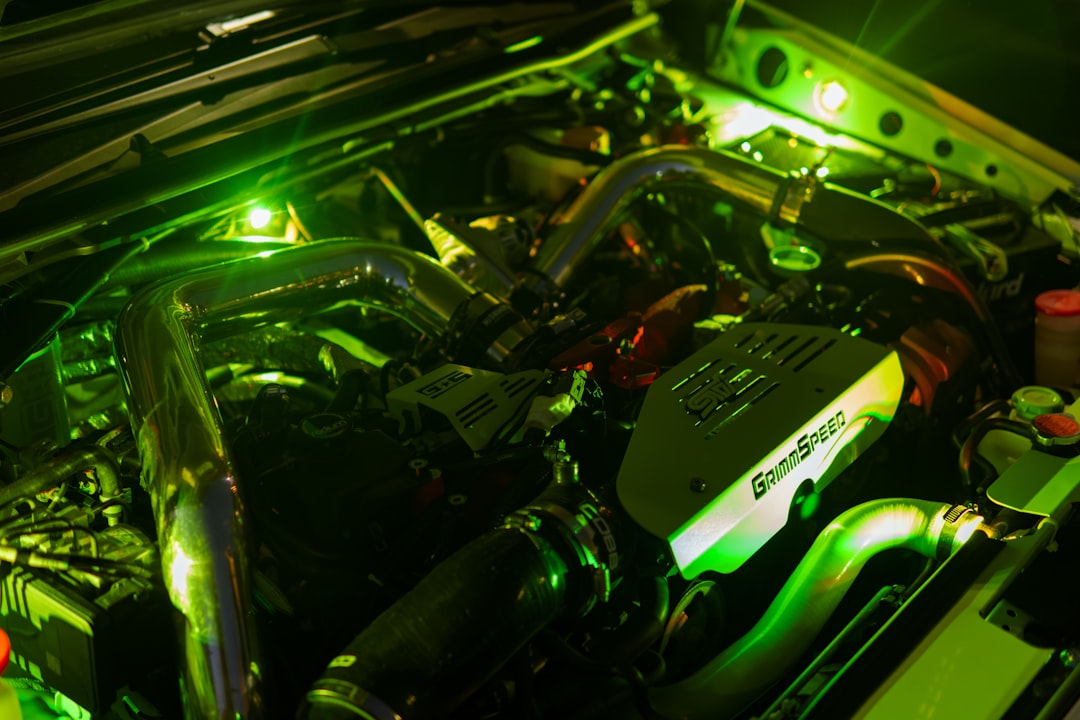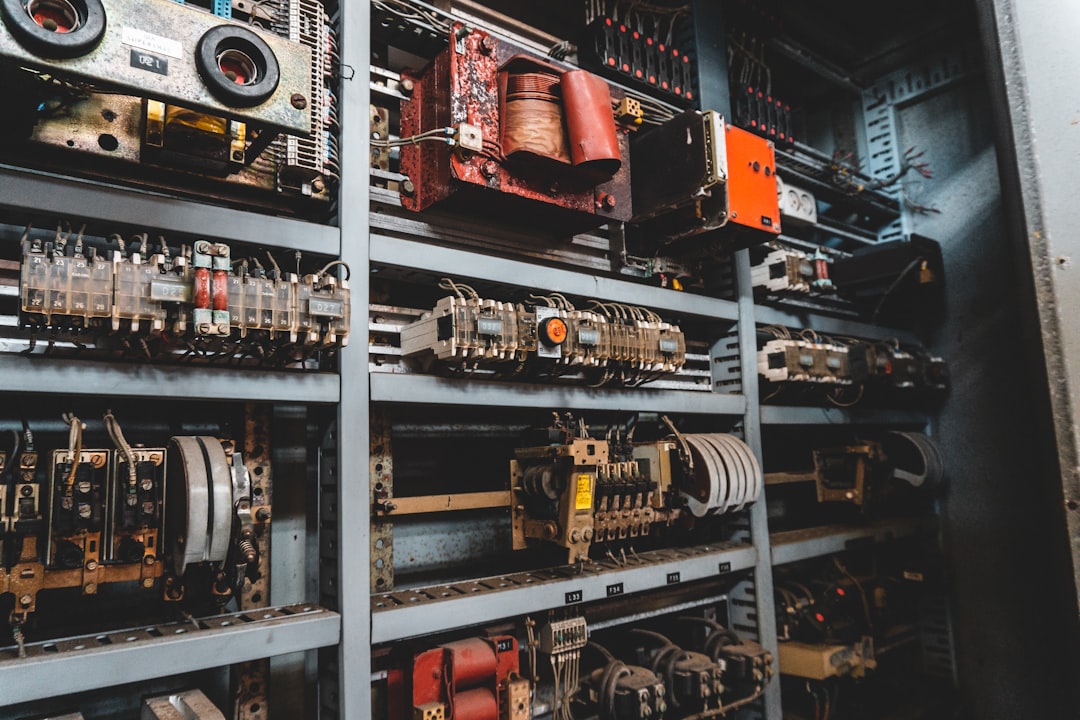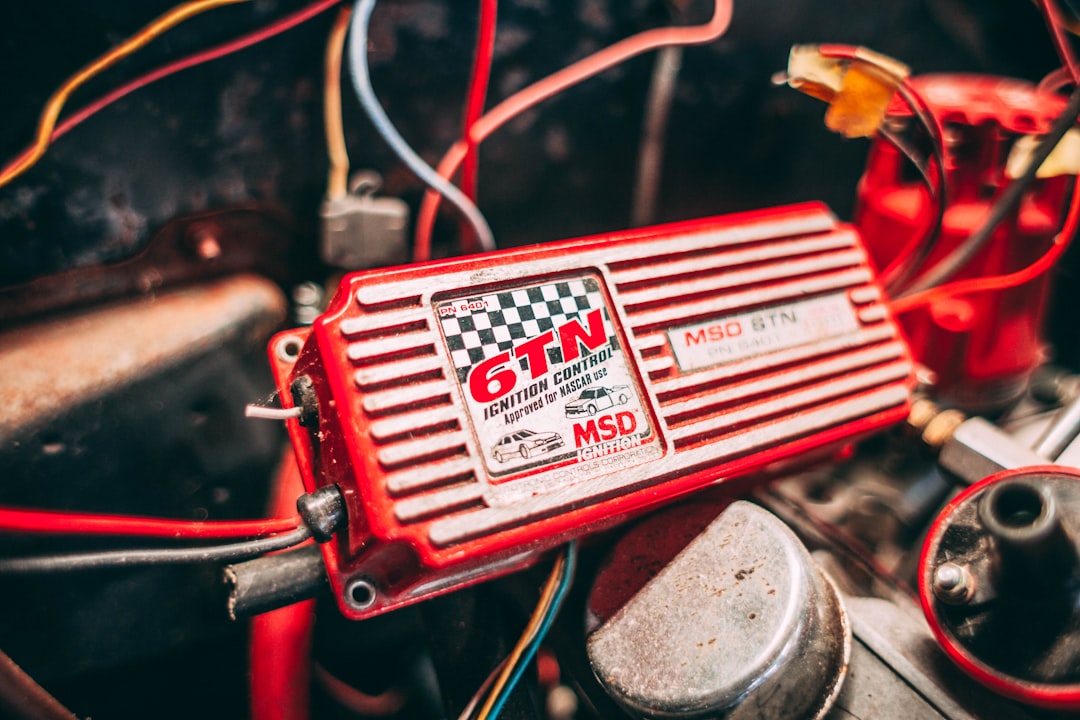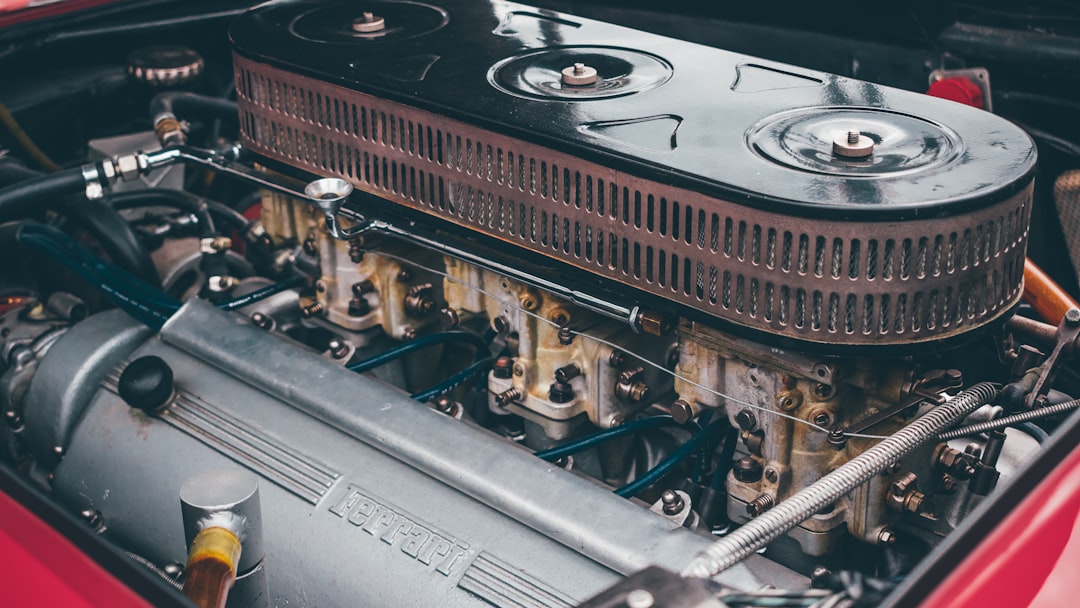In today’s digitally driven world, QR codes have evolved from novelty to strategic powerhouse, bridging offline engagement with online action. For auto generator suppliers, QR codes offer a frictionless, data-rich, and highly effective way to drive marketing outcomes and boost customer engagement without requiring an app download or complicated setup.
As sales and service technology advances, physical-to-digital touchpoints are increasingly essential for connecting showroom traffic, field demonstrations, jobsite consultations, and service promotions with trackable online actions. A recurring challenge persists: valuable prospects often interact with equipment displays, event signage, or brochures without leaving a trace in traditional CRM systems, resulting in high-value leads remaining unidentified and missed opportunities.
By embedding QR codes on everything from product placards and brochures to service records, invoices, and event signage, auto generator suppliers can unlock new levels of interactivity, lead generation, and offline attribution. This approach not only invites immediate digital engagement but also improves data capture, surfacing previously anonymous engagement signals for marketing and sales teams to act on quickly.
How to Achieve Enhanced Engagement and Measurement in Auto Generator Suppliers Using QR Codes: A Step-by-Step Guide

The fastest path to better engagement and measurable results starts with replacing analog touchpoints that slow your buyers down. Paper forms, static brochures, and manual sign-in sheets leave data gaps. QR codes streamline these interactions, turning every physical surface into a digital entry point and every scan into a signal you can track.
Use this framework to structure your rollout and tie scans to outcomes that matter for your business:
- Identify offline-to-online gaps: Map where in-person interest is failing to convert into captured leads, such as showroom visitors who take brochures without filling out a form or event attendees who glance at equipment but never join a follow-up list.
- Deploy high-value use cases: Connect printed materials to digital quote calculators, demo request forms, and virtual product tours. Replace manual warranty registration cards with digital forms that pre-fill model and serial number fields.
- Define success metrics early: Measure beyond scan volume. Track QR-to-lead conversion, completion rate for forms, the percentage of scans that book demos or service, and the revenue influenced by specific codes across placements.
- Design for intent and context: Place and customize QR codes where decision makers naturally pause, such as equipment placards, price sheets, installation guides, and service reminders. Use benefit-driven calls to action that promise specific outcomes, like instant quotes, specs, or booking confirmations.
- Integrate with tracking and CRM: Use a platform that syncs scan data in real time to your CRM, marketing automation, and analytics tools. This closes the gap between anonymous touchpoints and actionable opportunities for sales.
Modern solutions make it possible to replace slow, manual processes like paper warranty cards or conference fishbowls with immediate QR-driven digital flows. You capture qualified interest the moment it happens, often before competitors can intervene, and you support buyers with tailored content based on what they scanned and where they scanned it. Platforms like Sona QR support each step of this transformation, from code creation to analytics and CRM sync.
Why QR Codes Matter for Auto Generator Suppliers

Auto generator suppliers often struggle with visibility into prospective customers who browse equipment, attend demos, or collect brochures without sharing contact details. These anonymous moments add up to lost revenue potential. QR codes convert those moments into trackable actions, allowing suppliers to capture interest and follow up with speed and precision.
Consider how QR codes solve common pain points across the sales and service lifecycle:
- Bridging offline to online: Turn passive interest from placards, showroom displays, outdoor exhibitions, and window signage into digital engagement. A scan can open product specs, safety certifications, or comparison tools and can be captured in analytics for timely follow-up.
- Demand for speed and simplicity: Help buyers book a demo, request a quote, or download a spec sheet instantly. Scanners avoid manual data entry, and your team receives cleaner, more complete records for immediate outreach.
- Dynamic content flexibility: Update offers, pricing, or landing pages after printing. With dynamic QR codes, you can pivot a campaign midstream, redirect scans to fresh promotions, and maintain continuity without reprinting materials.
- Creating trackability: Each scan surfaces engagement that used to be invisible. You can see which display, event, or mailer sparked interest, then prioritize outreach to those segments and replicate top-performing placements.
- Improving cost efficiency: Use scan and conversion data to shift budget toward placements and messages that produce pipeline. Minimizing spend on untracked or underperforming channels lowers your acquisition costs and proves ROI.
By embedding QR codes across appointment cards, billboards near job sites, showroom placards, and service invoices, suppliers turn offline interactions into digital journeys. The result is a complete feedback loop where marketing learns what works and sales knows who to contact next.
Common QR Code Formats for Auto Generator Supplier Use Cases

Choosing the right QR format can make a big difference in user experience and conversion. For auto generator suppliers, formats that reduce friction during research, demo booking, and service tend to perform best.
- Web links: Drive scanners to landing pages with product details, comparison tools, load calculators, or financing options. This format is ideal for equipment placards, outdoor signage, and print ads.
- Forms: Capture lead details in seconds for quotes, demo requests, or site surveys. Use smart forms that auto-capture campaign source and pre-fill fields. This is a top format for trade shows and direct mail.
- vCards: Let prospects save a sales rep or service manager’s contact details with one tap. Add vCards to business cards, event lanyards, or rep one-pagers to eliminate mis-typed emails and missed callbacks.
- Wi-Fi access: Offer secure guest Wi-Fi in the showroom so buyers can explore detailed product resources on-site. Longer dwell time correlates with higher engagement and better conversion opportunities.
- App downloads: If you run a customer portal or service app, direct scanners to the correct app store automatically. This can deepen post-sale relationships through maintenance reminders, warranty tracking, and parts ordering.
Dynamic QR codes are especially powerful in this vertical because product specs, inventory availability, and promotions change frequently. With a platform like Sona QR, you can manage destinations centrally and enable retargeting campaigns, integrating performance data with tools like Google Analytics and your CRM.
Where to Find Growth Opportunities

Growth often hides in plain sight. Wherever your offline audience already interacts with products or staff, you have an opportunity to turn attention into action. Placing QR codes in high-traffic, contextually relevant locations closes the loop between discovery and measurable engagement.
- Event and expo booths: Add QR codes to equipment displays, demo schedules, and giveaway boards. Scans can drive instant demo bookings, gated product videos, or a fast-track quote request that flags high-intent leads for your reps.
- Showroom window stickers and placards: Capture after-hours interest from passersby by offering rapid access to specs and pricing, plus a one-click request for a call-back. Every scan becomes a lead, even when the showroom is closed.
- Product packaging and service reminders: Place codes on manuals, packaging slips, and maintenance tags to drive service bookings, warranty activation, and parts reordering. These touchpoints create recurring engagement and retention.
- Print advertising and direct mail: Turn brochures, flyers, and mailers into measurable channels with personalized QR codes. Attribute responses to specific lists, offers, and geographies, then reallocate budget based on performance in direct mail.
- Branded merchandise: Put QR codes on hats, stickers, and giveaways that link to exclusive content, referral programs, or loyalty perks. This extends the life of your campaign beyond the initial interaction.
Adopting these placements not only surfaces hidden demand but also strengthens your follow-up strategy. By capturing context such as location and campaign source, you can tailor outreach to the buyer’s interest and stage.
Use Cases for QR Codes in Auto Generator Suppliers
QR codes are most effective when tied to high-intent actions. Focus on the touchpoints that shorten time to quote, accelerate demos, and improve post-sale satisfaction.
- Demo registration: Place QR codes on equipment displays, spec sheets, and event signage to let prospects schedule on-site or virtual demos instantly. This avoids slow back-and-forth emails, reduces no-shows with automated confirmations, and feeds qualified leads directly into your CRM.
- After-sales support and maintenance: Add QR codes to service booklets, unit casings, and invoices that open maintenance schedules, video guides, and booking forms. This increases retention, improves customer satisfaction, and generates upsell opportunities for extended warranties or monitoring services.
- Product information access: Use QR-enabled placards that deliver load calculators, fuel efficiency comparisons, regulatory certifications, and financing options. Buyers make decisions faster with confidence, and your team sees which models and specs are drawing attention.
Start by piloting these use cases in one location or event, then expand to additional placements as you validate conversion rates. Track outcomes such as demo bookings, quote requests, and service appointments originating from each code to guide optimization.
How to Build High-Value Audiences for Retargeting with QR Code Campaigns
Every QR scan is a behavioral signal that reveals intent. With thoughtful deployment across the funnel, you can build segmented audiences automatically and nurture them with precision.
- Create unique QR journeys for each stage: Use distinct codes for awareness assets like billboards or flyers, consideration assets like product brochures and case studies, and conversion assets like pricing sheets and limited-time offers. Each scan organizes contacts by stage.
- Tag audiences by interest: Separate scanning events for buyers evaluating new units from existing customers seeking maintenance. Tag scans by model family, power class, or application type such as residential, commercial, and industrial.
- Track location, channel, and timing: Segment based on where a scan occurs, such as showroom, jobsite demo, or trade show, and when it occurs relative to campaigns. Insights like weekend traffic versus weekday scans can inform staffing and outreach cadence.
- Feed data into CRM and ad platforms: Sync scan metadata with HubSpot, Salesforce, and ad platforms to trigger workflows. For example, push a construction-industry segment that scanned high-capacity models into a LinkedIn Ads audience while sending personalized emails to book a site survey.
For auto generator suppliers, useful audience distinctions include contractors versus facility managers, homeowners versus property managers, new equipment buyers versus service-only customers, and emergency preparedness planners versus routine maintenance clients. With Sona QR, each code serves as a smart funnel entry that transforms anonymous interactions into targeted segments.
Integrating QR Codes into Your Multichannel Marketing Mix
QR codes provide connective tissue for your marketing stack. They carry a prospect from a physical impression to a digital action, while feeding analytics that make your next decision smarter.
- Brochures and print collateral: Add QR codes that drive to landing pages with specs, calculators, and request-a-quote forms. Each scan helps attribute pipeline to specific brochures and creative variations, guiding print investment.
- Social media and user-generated content: Encourage photo or video sharing from demos by placing QR codes on booth signage and swag that open a submission form or branded hashtag page. Build a library of real-world use cases for retargeting content.
- Direct mail: Deploy personalized QR codes on mailers promoting seasonal service checks or inventory clearances. You can track household-level engagement, segment by product interest, and route hot leads to sales quickly.
- Showroom signage and digital displays: Let walk-ins compare models, check availability, and request a call-back with a scan. For premium displays, use QR codes to gate long-form videos and collect lead data in exchange for exclusive content on digital displays.
- Conferences and trade shows: Put QR codes on booth panels, handouts, badges, and demo stations. Tag scans by time and location to see which sessions or displays drive interest and follow up accordingly.
QR codes create a unified flow across channels that were once hard to measure. With a centralized platform like Sona QR, you can manage code inventory and monitor performance, syncing scan activity to your CRM and ad tools for coordinated follow-up.
Step-by-Step QR Campaign Execution Checklist
Launching a QR initiative is straightforward when you break it into clear steps. Start with a single use case tied to revenue, validate assumptions with data, then scale to additional placements and messages.
Below is a practical checklist adapted for auto generator suppliers. Use it to plan, execute, and optimize with confidence.
Step 1: Choose your use case
- Define your campaign goal: Pick a single high-impact outcome such as demo booking, quote request, service scheduling, or warranty activation. For example, drive demo RSVPs at a construction expo or encourage on-the-spot quote requests in the showroom.
- Align purpose to business results: Clarify how this action will produce pipeline or retention value. Tie success to measurable KPIs such as conversion rate, cost per lead, or booked revenue from scans.
Step 2: Pick a QR code type
- Static QR code: Use for fixed destinations like a general brochure PDF or a timeless safety checklist where tracking and changes are not needed.
- Dynamic QR code: Use for editable destinations, tracking, and retargeting. This is ideal for campaigns, demos, and anything that benefits from A/B testing or post-print updates.
- Choose dynamic for flexibility: If you want data, audience segmentation, and future-proofed content, dynamic codes are the default choice.
Step 3: Design and test the code
- Brand the experience: Add your logo, brand colors, and a clear frame around the code. Use a concise, benefit-driven call to action such as Scan to book a demo or Scan for instant quote.
- Validate scannability: Test across iOS and Android devices, under varied lighting, angles, and distances. Ensure sufficient contrast and quiet zone around the code. Print at an appropriate size for the viewing distance.
Step 4: Deploy across high-impact channels
- Match placements to behavior: Use conference signage, showroom placards, direct mailers, and equipment labels based on where your audience is most likely to act.
- Prioritize context-rich moments: Place codes where buyers pause, such as by a popular model, in the service waiting area, or at a demo station. Provide a clear promise of value to motivate the scan.
Step 5: Track and optimize
- Instrument analytics: Track scans by time, location, and device with Sona QR. Append UTM parameters to every destination for consistent attribution in Google Analytics.
- Iterate on performance: Monitor conversion rates and drop-off. A/B test landing pages, creative, and CTAs. Shift inventory to placements and messages that produce the highest quality leads.
As your team gains confidence, expand to additional codes tied to distinct use cases, audiences, and stages in the buyer journey. A rolling test-and-learn approach will steadily improve scan rates, conversion, and revenue impact.
Tracking and Analytics: From Scan to Revenue
Without tracking, a QR code is only a shortcut. With tracking, it becomes a performance channel that connects physical touchpoints to pipeline and revenue. The goal is not just to count scans, but to understand how each scan contributes to the buyer journey and to optimize investments accordingly.
A robust analytics setup links scan context to downstream actions such as form fills, demo attendance, quotes, and closed deals. It also surfaces the moments and placements that create the most value, so you can replicate success efficiently.
- Capture detailed scan data: Log time, device, location, and campaign source for every scan. Use unique codes per placement to identify top-performing assets and environments.
- Measure engagement by channel: Compare scan volume and conversion across print, events, signage, and direct mail. Identify the combinations of message and medium that produce qualified leads.
- Act in real time: Use live dashboards to alert sales when high-intent scans occur, such as pricing-page visits or demo bookings. Strike while interest is highest.
- Connect to your CRM: Automatically enrich contacts in HubSpot or Salesforce with scan activity and campaign metadata. Route leads and trigger workflows based on intent signals.
- Attribute revenue: Tie scan events to pipeline and closed-won deals. Multi-touch models show how QR interactions assisted conversions, strengthening your business case for scaling.
Sona QR captures the granular data you need, while Sona helps unify fragmented touchpoints across buying stages. Together, they create a clear line from scan to revenue, proving the impact of your offline-to-online strategy.
Tips to Expand QR Success in Auto Generator Suppliers
Scaling success requires discipline in how you create, label, and deploy QR assets. It also benefits from creativity in placement and messaging that aligns to buyer motivations at the moment of scan.
- Use unique codes by channel and location: Differentiate codes for each brochure, placard, billboard, and booth panel so you can attribute performance accurately. This prevents muddled insights and guides budget decisions.
- Attach UTM parameters to every destination: Standardize source, medium, and campaign naming. This ensures downstream analytics and CRM reports reflect true QR performance without guesswork.
- Trigger automated follow-up: Connect scans to SMS or sales alerts so prospects hear from you quickly. Example: a scan on a generator casing triggers a message with maintenance tips and a one-click booking link for a tune-up.
- Educate staff to promote scanning: Equip reps and service advisors with a simple script that explains the value of scanning and what the customer will receive. Combine this with clear, benefit-first CTAs on signage.
Creative deployment ideas include QR stickers on rental units that open an operator checklist, and QR codes on post-service invoices that link to a satisfaction survey plus a discounted parts offer. These integrations build habits that increase recurring engagement and lifetime value.
Real-World Examples and Creative Inspiration

Proof points and creative tactics help teams move from theory to practice. Below are examples adapted for the auto generator category that illustrate measurable gains and smart placement ideas.
- Expo demo bookings surge with unique codes: A multi-city supplier discovered that more than 30 percent of demo leads went unrecorded at events. Replacing paper sign-up sheets with unique QR codes for each demo station increased bookings by 27 percent and closed the attribution gap across cities.
- Direct mail becomes a precision channel: Personalized QR codes on seasonal maintenance mailers produced a threefold lift in response. Because scans were tagged by neighborhood and equipment type, the team prioritized follow-up with engaged households and scheduled service routes more efficiently.
- Service experience insights from invoices: QR codes on service invoices linked to a brief satisfaction survey and a maintenance plan explainer. Completion rates increased significantly, revealing churn risks earlier and generating incremental revenue from extended warranties.
- Product placards that sell: Showroom placards with QR codes pointing to interactive load calculators and case studies shortened sales cycles. Prospects arrived at the conversation pre-qualified with a sense of required capacity and a preferred model shortlist.
- Referral loops powered by swag: Branded hard hat stickers with a QR code to an industry-specific resource library encouraged word-of-mouth sharing. Scans built a segmented audience of construction professionals for targeted follow-up and referral rewards.
These examples highlight a consistent pattern: when QR codes make the next step obvious and valuable, engagement rises and data quality improves. Over time, you can stack small wins across placements into a large, measurable impact on pipeline and retention.
QR codes are more than a technology trend for auto generator suppliers. They provide a strategic solution to longstanding challenges in capturing high-value prospects, surfacing anonymous engagement, and proving marketing ROI. By transforming every offline encounter into a digital opportunity, enabling better segmentation and closed-loop attribution, marketing teams can optimize campaigns, personalize offers, and accelerate revenue growth. With integrated tools such as Sona QR and Sona.com, you can manage the full journey from scan to sale with clarity and control. Start creating QR codes for free.
Conclusion
QR codes have revolutionized the auto generator suppliers industry by transforming traditional product access and information sharing into seamless, measurable interactions. Whether it’s simplifying customer onboarding, enhancing after-sales support, or streamlining inventory and maintenance access, QR codes replace cumbersome manual processes with instant, mobile-friendly solutions that drive efficiency and satisfaction. Imagine empowering your clients to instantly access detailed specs, warranty registration, and service schedules with a simple scan—boosting trust and accelerating purchase decisions.
With Sona QR, you can create dynamic, trackable QR codes in seconds, update content on the fly without reprinting labels or manuals, and link every scan directly to actionable insights. This means no missed opportunities to engage customers, optimize your supply chain, or measure campaign ROI. Start for free with Sona QR today and turn every QR code into a powerful gateway for growth and customer loyalty in the auto generator supply industry.
FAQ
What are the best QR code generators for the automotive industry?
Platforms like Sona QR are ideal for auto generator suppliers because they support code creation, analytics, CRM integration, and dynamic QR code management tailored to automotive marketing needs.
How can QR codes be used in automotive marketing?
QR codes can be embedded on brochures, product placards, service invoices, and event signage to drive digital engagement, capture leads, enable demo bookings, provide product specs, and improve offline-to-online attribution.
What features should I look for in an auto generator QR code supplier?
Look for features like dynamic code editing, real-time CRM and analytics integration, audience segmentation, tracking by location and campaign, and support for multiple QR formats such as web links, forms, and vCards.
How do I choose the right QR code supplier for my car dealership or auto generator business?
Choose a supplier that offers easy code customization, robust tracking and analytics, seamless CRM sync, dynamic QR capabilities for content updates, and tools to create targeted campaigns with measurable outcomes.
What are the benefits of using QR codes in vehicle and auto generator marketing?
Benefits include converting anonymous offline interest into trackable leads, speeding up buyer interactions, enabling dynamic content updates, improving marketing ROI through data-driven budget allocation, and enhancing customer engagement and retention.





















